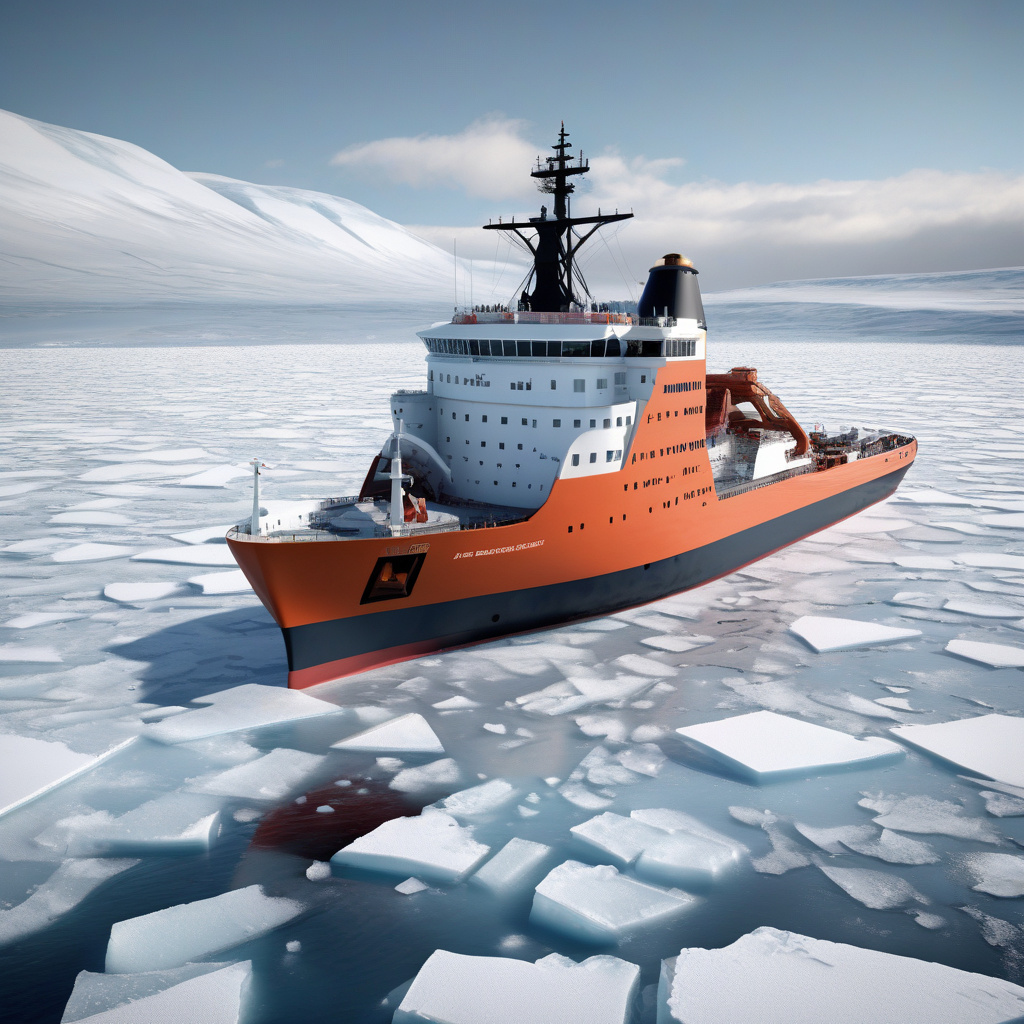Smashing through ice: Germany’s icebreaker gets ‘largest’ 360-degree propulsion system
Germany’s icebreaker Polarstern has secured a new groundbreaking propulsion system as part of its next-generation upgrades. This innovative 360-degree propulsion system, touted as the ‘largest’ of its kind, is set to revolutionize the way icebreakers navigate through icy waters, setting a new standard for efficiency and maneuverability in extreme conditions.
The Polarstern, operated by the Alfred Wegener Institute, Helmholtz Centre for Polar and Marine Research, plays a crucial role in polar research and exploration. Equipped with state-of-the-art technology, this icebreaker is essential for reaching remote research locations in the Arctic and Antarctic regions. With the installation of the new 360-degree propulsion system, the Polarstern is expected to enhance its icebreaking capabilities significantly, ensuring safer and more efficient operations in harsh environments.
Unlike traditional propulsion systems that are limited in their range of motion, the new 360-degree system allows the Polarstern to move in any direction without the need for additional thrusters. This level of maneuverability is unprecedented in icebreaker technology and will enable the vessel to navigate through dense ice fields with greater precision and control. By optimizing its propulsion system, the Polarstern can break through thicker ice more effectively, opening up new possibilities for polar research missions.
The development of this advanced propulsion system represents a significant milestone in the field of icebreaker technology. Engineers and researchers have worked tirelessly to design a system that can withstand the extreme conditions of polar regions while maximizing operational efficiency. By incorporating the latest innovations in propulsion technology, the Polarstern is poised to set new standards for icebreaking performance and reliability.
In addition to its enhanced maneuverability, the new propulsion system is also designed to improve fuel efficiency and reduce environmental impact. By optimizing the power distribution and propulsion control systems, the Polarstern can operate more sustainably during long expeditions, minimizing its carbon footprint and overall environmental footprint. This commitment to eco-friendly operations underscores Germany’s leadership in promoting sustainable practices in polar research and exploration.
As the Polarstern prepares to embark on its next research expedition, the installation of the new 360-degree propulsion system marks a significant advancement in icebreaker technology. By equipping the vessel with the largest and most advanced propulsion system to date, Germany is reinforcing its commitment to driving innovation in polar research and exploration. The Polarstern’s ability to smash through ice with precision and efficiency will enable scientists to conduct groundbreaking research in some of the most remote and challenging environments on Earth.
In conclusion, the introduction of Germany’s icebreaker Polarstern with the ‘largest’ 360-degree propulsion system represents a major leap forward in icebreaker technology. By combining cutting-edge engineering with a focus on sustainability, the Polarstern is poised to redefine the capabilities of modern icebreakers and pave the way for future innovations in polar research. As the vessel sets sail with its new propulsion system, the possibilities for groundbreaking discoveries in the polar regions are limitless.
Germany, Polarstern, icebreaker, propulsion system, research












